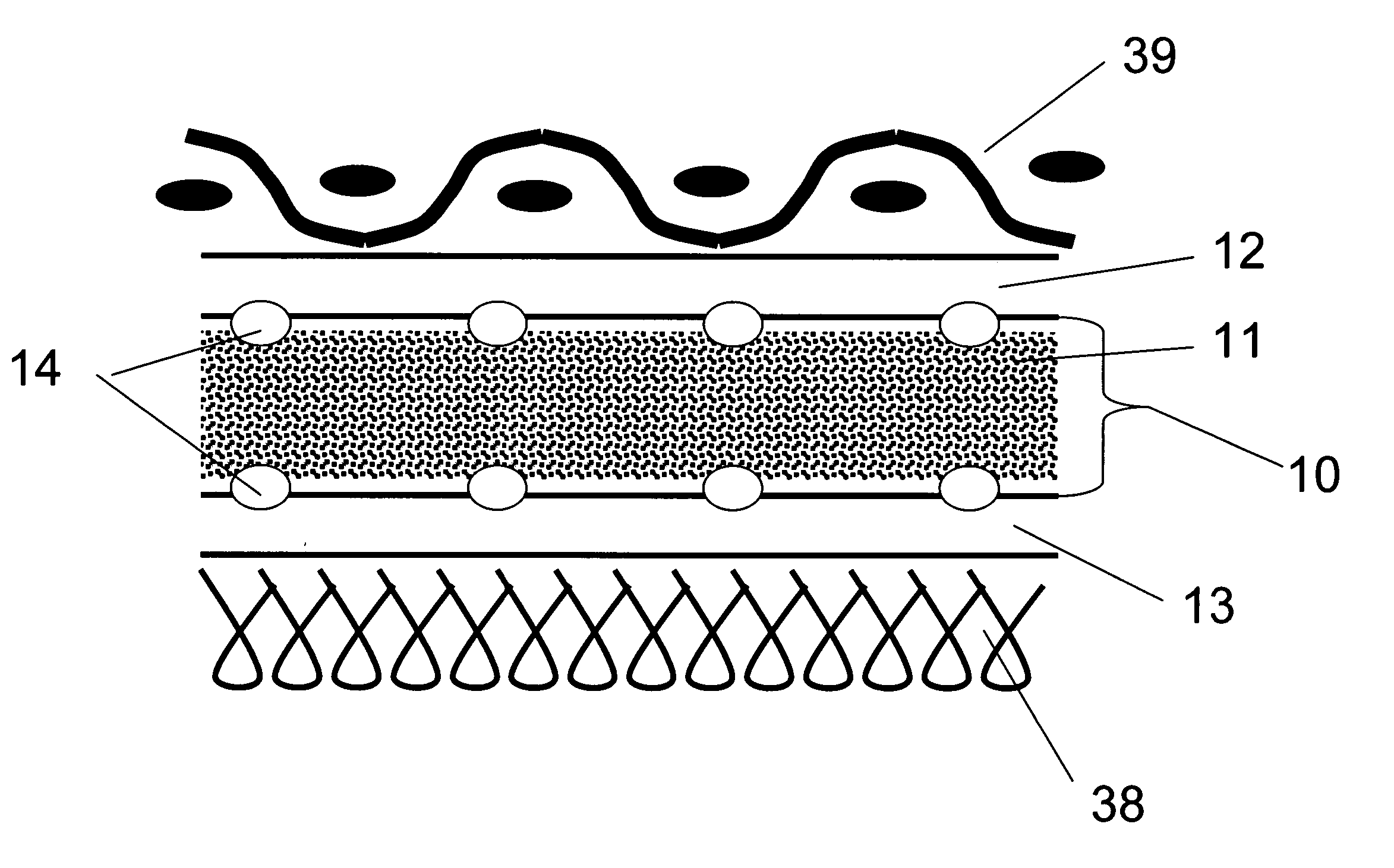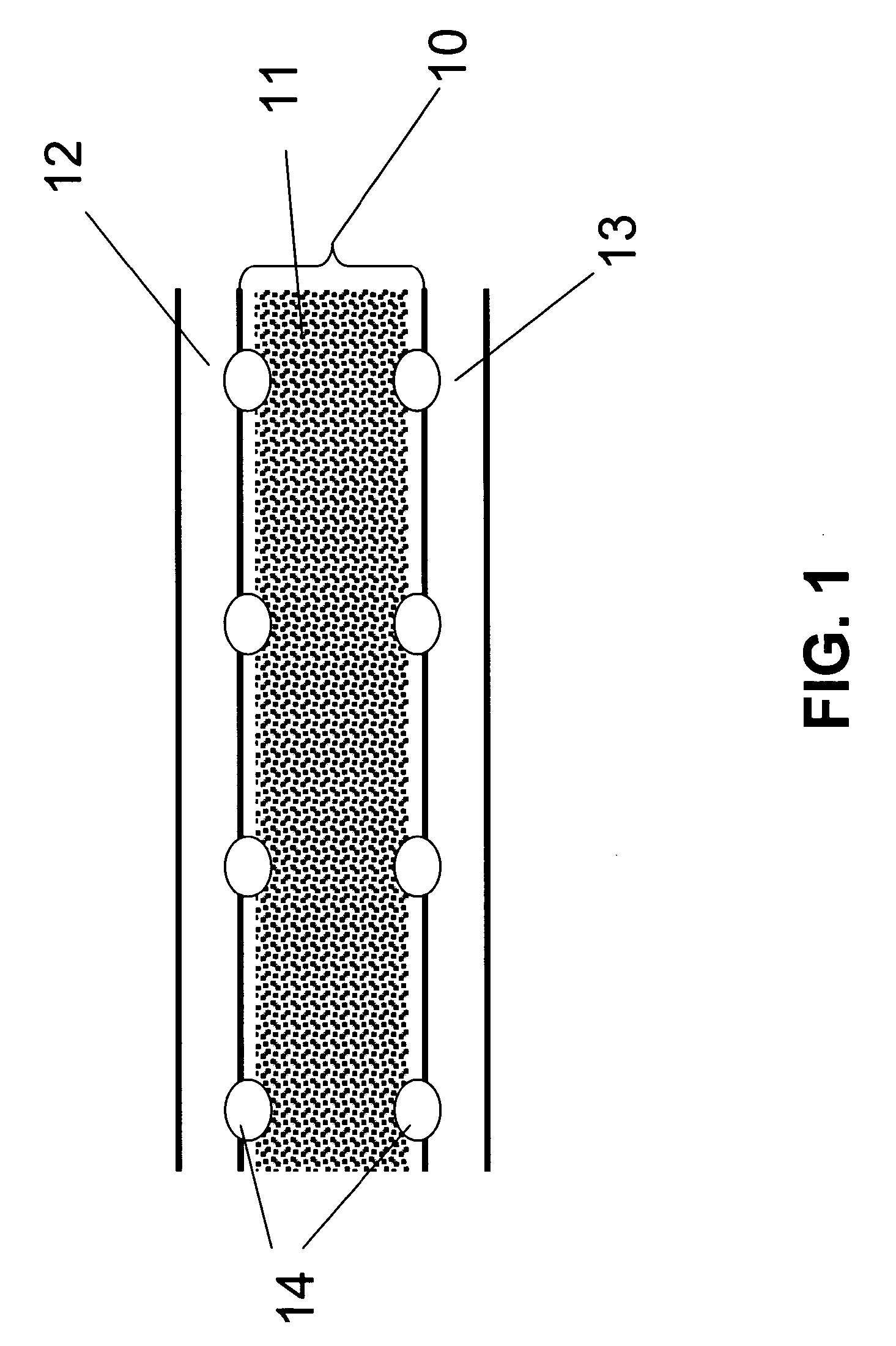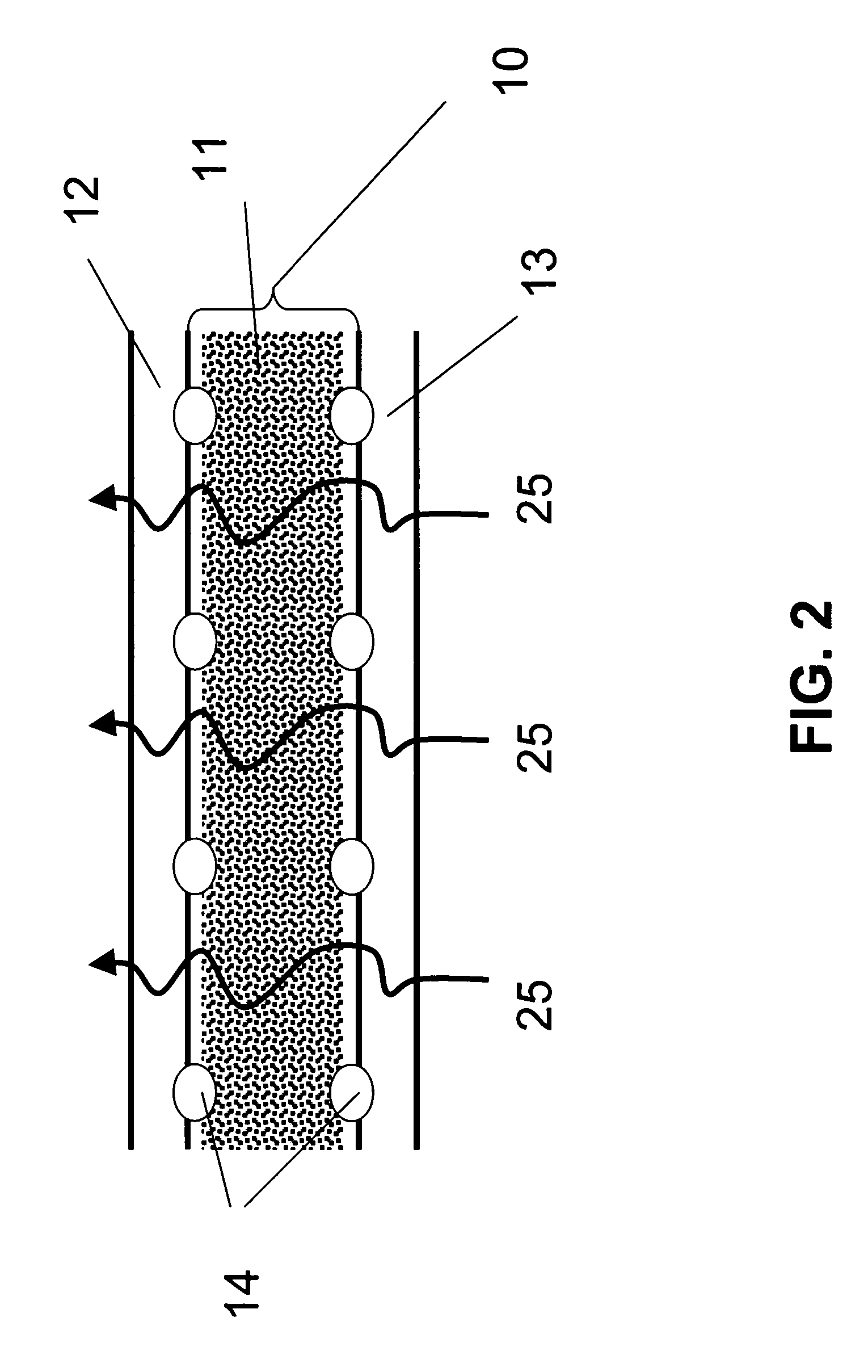Durable covering for chemical protection
a technology of chemical protection and flexible coverings, applied in the field of durable and flexible coverings, can solve the problems of heavy and bulky systems, undetected low levels of moisture vapor transport, etc., and achieve the effects of less bulk, high moisture vapor transport, and durable protection
- Summary
- Abstract
- Description
- Claims
- Application Information
AI Technical Summary
Benefits of technology
Problems solved by technology
Method used
Image
Examples
example 2
[0075] An activated carbon impregnated knit functional layer between two oleophobic microporous films was prepared and tested for chemical permeation, air permeability and moisture vapor transmission rate (MVTR).
[0076] Micro-porous ePTFE film layers were added to both sides of the carbon functional layer described in Comparative Example 1. The ePTFE film weighed about 21 gm / m2, had 70-85% porosity with an average pore size of 0.2 microns. The film was pre-treated with an oleophobic polymer substantially according to the teachings of U.S. Pat. No. 6,074,738. Resulting film had an oil rating of >6. The films were adhered to the carbon functional layer using a hot melt moisture cure polyether polyurethane adhesive (made according to U.S. Pat. No. 4,532,316) using discontinuous dots providing a 30-40% surface coverage. Additionally, a polyester knit (style # P837) from Milliken & Company, Spartanburg, S.C. was laminated to the side facing the body using the same process as described ab...
example 3
[0078] An activated carbon impregnated knit functional layer between two microporous film layers was prepared and was tested for chemical permeation, air permeability and moisture vapor transmission.
[0079] A carbon functional layer was prepared similarly to Example 2 except the ePTFE film used on the shell fabric side did not have an oleophobic treatment. The film employed weighed about 17 gram / m2, had 70-85% porosity and average pore size of 0.2 microns. The film was prepared substantially according to U.S. Pat. No. 3,953,566. The resulting functional layer was layered with a nyco shell fabric and tested for MVTR and air permeability, and chemical permeation with and without wash / dry cycles and contamination. The procedures were performed according to the methods described herein. The results of chemical permeation are included in Table 1.
[0080] The PMF permeation was lower than samples having no film layers (Comparative Example 1). The 2CES permeation after diesel contamination ...
example 5
[0087] An activated carbon impregnated foam function layer between two oleophobic micro-porous films was prepared and tested for chemical permeation, air permeability and moisture vapor transmission rate (MVTR).
[0088] The procedure was similar to that of Example 2 above except that the functional layer employed was the calendered carbon impregnated foam used in Comparative Example 4. Oleophobic micro-porous ePTFE film layers (oil rating of >6) were added to both sides using hot melt adhesive followed by a knit layer. This was then layered with the nyco shell fabric described in Comparative Example 1. The resulting construction was tested for MVTR and air permeability, and chemical permeation before and after wash / dry cycles and contamination. The results of chemical permeation are reported in Table 3.
[0089] The permeation of both PMF and 2CES has been reduced by addition of oleophobic microporous films compared to samples prepared with no films (Comparative Example 4).
[0090] As s...
PUM
| Property | Measurement | Unit |
|---|---|---|
| pore diameter | aaaaa | aaaaa |
| pore diameter | aaaaa | aaaaa |
| thick | aaaaa | aaaaa |
Abstract
Description
Claims
Application Information
 Login to View More
Login to View More - R&D
- Intellectual Property
- Life Sciences
- Materials
- Tech Scout
- Unparalleled Data Quality
- Higher Quality Content
- 60% Fewer Hallucinations
Browse by: Latest US Patents, China's latest patents, Technical Efficacy Thesaurus, Application Domain, Technology Topic, Popular Technical Reports.
© 2025 PatSnap. All rights reserved.Legal|Privacy policy|Modern Slavery Act Transparency Statement|Sitemap|About US| Contact US: help@patsnap.com



